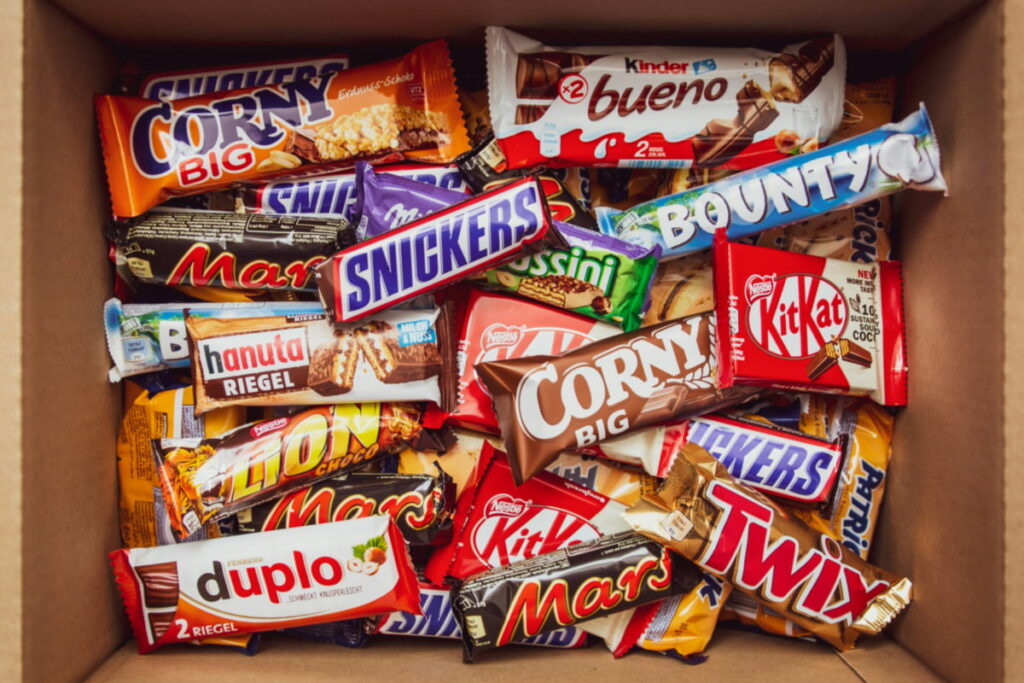
⚠️ Disclaimer: This article is for informational purposes only and is based on manufacturer-provided information as of November 2025. It is not a substitute for professional medical advice. Ingredient lists and manufacturing processes can change at any time. If you have a severe allergy, always read the product packaging and consult your doctor.
If you’ve ever stood in the candy aisle wondering whether a Twix, KitKat, or Milky Way is safe for someone with a peanut allergy—you’re not alone.
Allergen labeling can be confusing, and even when peanuts aren’t listed as ingredients, many candy bars are made in factories that also handle nuts. One wrapper says “may contain,” another doesn’t, and online answers often contradict each other.
That’s why we built this verified 2025 candy bar allergen guide. It’s based on official manufacturer statements, updated ingredient lists, and real customer-service responses from Mars, Hershey, Nestlé, and Ferrero.
Below, you’ll find an easy-to-read table and brand-by-brand breakdown explaining which candy bars contain peanuts or tree nuts, which are made on shared lines, and which are safest if you have a peanut allergy.
Quick Answer: Which Candy Bars Contain Peanuts or Tree Nuts?
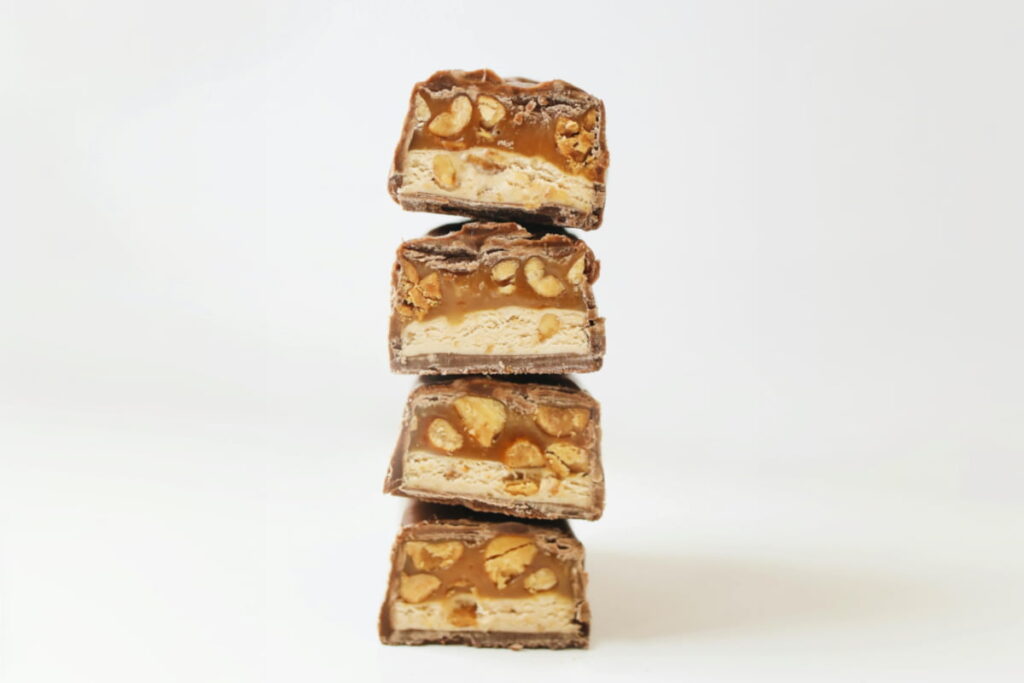
If you’re standing in the candy aisle wondering which bars are safe for someone with a peanut or tree nut allergy, here’s the short version.
This list is based on manufacturer allergen information verified in November 2025. (Always re-check the wrapper before eating, recipes and facilities can change.)
| Candy Bar | Contains Peanuts / Tree Nuts | Notes |
| Snickers | ✅ Yes | Made with peanuts and tree nuts; not safe for allergy sufferers. |
| Twix | ⚠️ May contain | No peanuts in recipe, but U.S. bars share lines with Snickers. |
| 3 Musketeers | ⚠️ May contain | No peanuts in recipe; produced on shared equipment. |
| Milky Way | ⚠️ Varies | U.S. version may contain; U.K. version is peanut-free. |
| Kit Kat | ⚠️ May contain | U.S. made on shared lines; U.K. KitKats from nut-free plants. |
| M&M’s (Plain) | ⚠️ May contain | Made near Peanut M&M’s; cross-contact possible. |
| Reese’s Cups | ✅ Yes | Made with real peanut butter; always contains peanuts. |
| Hershey’s Bar | ❌ No | Standard milk chocolate made in a peanut-free facility. |
| Butterfinger | ✅ Yes | Contains peanut butter center; not safe for allergy sufferers. |
| Baby Ruth | ✅ Yes | Made with peanuts, caramel, and nougat; always contains peanuts. |
Decoding Candy Bar Labels: What “May Contain” Really Means for Peanut Allergies

Ever spotted a candy bar screaming “CONTAINS PEANUTS” in bold, while another whispers “May Contain Peanuts” in fine print?
With peanut allergies affecting over 6 million Americans, including an estimated 1 in 50 children, those words aren’t just legalese, they’re a lifeline.
But they’re often misunderstood. Let’s decode them step by step for safer snacking.
“Contains” = Legally Required Warning
In the U.S., the Food Allergen Labeling and Consumer Protection Act (FALCPA) sets strict rules for how allergens must be listed on packaged foods.
Here’s what it means in plain language:
- “Contains” means it’s in the recipe: If you see “Contains: Peanuts, Milk, Soy”, those ingredients were intentionally added, they’re not traces or cross-contact risks.
- It’s a legal requirement, not optional: Companies must include this line if any of the nine major allergens (like peanuts or tree nuts) are part of the ingredients.
- No safe version: If a candy bar says “Contains Peanuts,” that product is not safe for anyone with a peanut allergy, it always includes peanuts.

“May Contain” = Voluntary Precaution and a Major Problem
Unlike “Contains,” the “May Contain” label isn’t required by law.
For anyone managing food allergies, “May Contain” can feel like a gamble. Because the warning isn’t legally standardized, its meaning changes from one product to the next. It’s used when there’s a chance of cross-contact, even if the allergen isn’t part of the recipe.
The Natasha Allergy Research Foundation has described this lack of standardization as a major problem for families living with allergies.
- Means: Peanuts aren’t an ingredient, but trace amounts might be present.
- Why it exists: Factories often run multiple products on the same lines or in the same building.
- Who decides: Manufacturers add this warning voluntarily to alert consumers and reduce liability.
- What it means for you: Treat as a potential risk, especially for severe allergies.
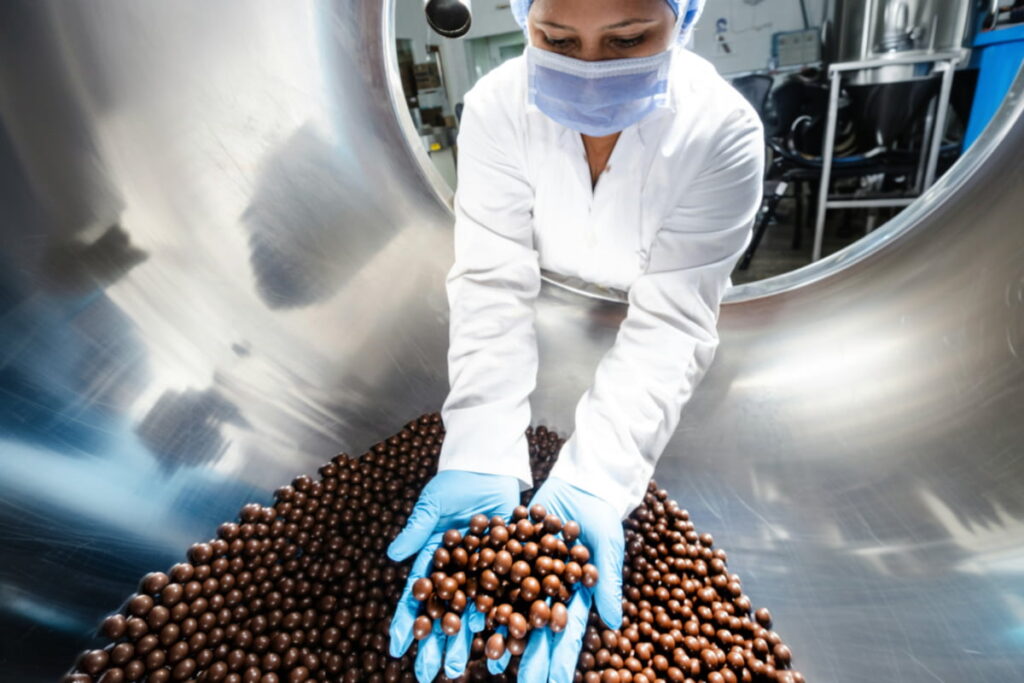
“Shared Equipment” vs. “Shared Facility”
You’ll often see these phrases printed right on the candy bar wrapper, but they don’t mean the same thing, one signals shared machinery, the other just the same building.
Shared Equipment = Highest Risk
- Definition: Same machines used for different products (e.g., Twix and Snickers on one line).
- Why it matters: Even after cleaning, residue can remain on rollers or mixers.
- Risk level: High, avoid if you have a severe peanut allergy.
Shared Facility = Moderate Risk
- Definition: Peanuts handled in the same building, but not on the same machinery.
- Example: Hershey’s Milk Chocolate bars are made in a peanut-free area of a plant that also produces Reese’s.
- Risk level: Lower, but still possible, decide based on medical guidance and comfort level.
Why Brands Use These Warnings
There are two main reasons:
- Legal liability: If a company doesn’t warn and cross-contact happens, they face major risk, including legal action and profound brand damage.
- Genuine consumer safety: Responsible brands want transparency so allergic consumers can make informed choices.
However, because “may contain” is voluntary and unstandardized, two similar candies can carry totally different warnings even when produced under similar conditions.
Your Action Plan: Stay Safe & Satisfied
- “Contains” = ingredient is in the recipe. Always avoid.
- “May Contain” = possible cross-contact; use your doctor’s advice and comfort level.
- “Shared Equipment” = highest risk.
- “Shared Facility” = lower risk, but not zero.
Understanding these nuances helps you read labels like a pro, and stay safe even when brands or packaging change.
The Big Four Manufacturers, Brand-by-Brand Deep Dive (November 2025)
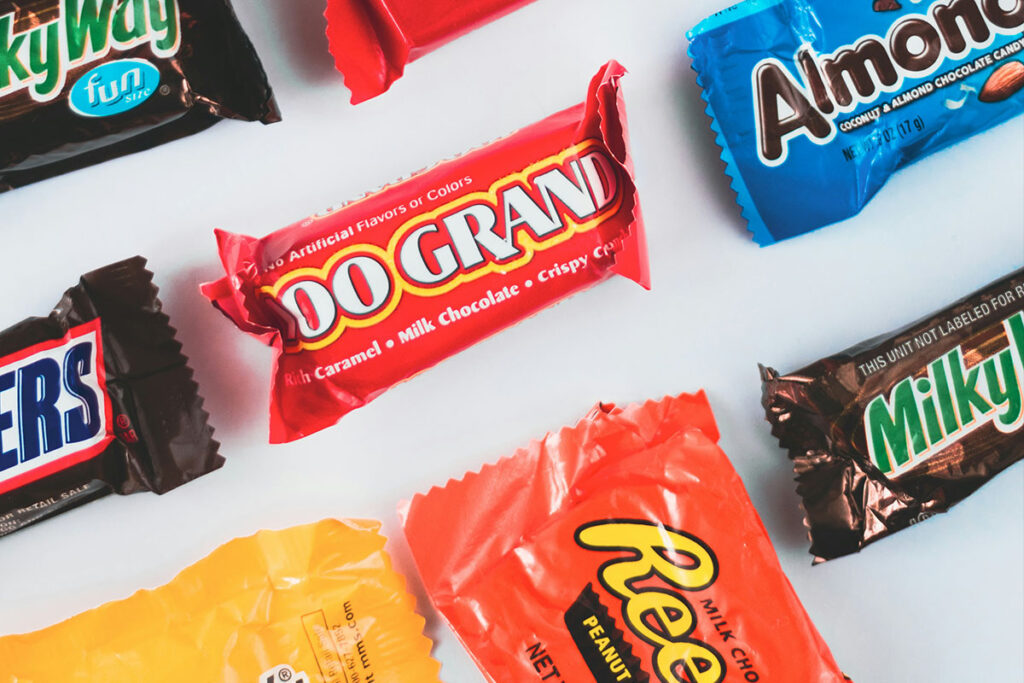
Every major candy brand handles allergens differently.
Below, you’ll find a quick overview of how the four biggest manufacturers, Mars Wrigley, Hershey, Nestlé, and Ferrero, approach peanuts, tree nuts, and cross-contact in their most popular candy bars.
All information was checked against official manufacturer statements and consumer-care response
Mars Wrigley

Overall Allergen Policy: Mars Wrigley encourages consumers to read every product label, every time. Their facilities may process multiple products on shared lines, and they use “may contain” statements when cross-contact can’t be fully ruled out.
- Snickers: Contains peanuts and tree nuts; always high risk. Every variety (Original, Almond, Peanut Butter, Ice Cream Bar) includes real peanuts. Not safe for allergy sufferers.
- Twix US: No peanuts are used in the recipe, but both the U.S. and U.K. versions carry “may contain” warnings. In the U.S., Twix is made on shared equipment with Snickers, creating a high peanut cross-contact risk.
- Twix UK: In the U.K., Twix does not list peanuts among potential allergens, but the wrapper notes possible traces of almonds and hazelnuts, meaning it’s not produced in a fully nut-free facility. Always check the label, as production sites and allergen warnings can change.
- 3 Musketeers: Peanut-free recipe but produced on shared equipment with other Mars products. Label typically includes a “may contain” warning.
- Milky Way: U.S. bars may contain peanuts or be made on shared lines. International versions (marketed as the Mars Bar in the U.K.) are often peanut-free. Always check origin.
- M&M’s (Plain): No peanuts in ingredients, but made in the same facilities as Peanut and Peanut Butter M&M’s. Cross-contact is likely; “may contain” appears on most packs.
The Hershey Company

Overall Allergen Policy: Hershey provides some of the clearest allergen labeling in the industry and operates several dedicated peanut-free facilities. Always verify each package, since seasonal or limited-edition items may be produced elsewhere.
- Reese’s Peanut Butter Cups: Contain peanuts and tree nuts; always high risk. No peanut-free version.
- Hershey’s Milk Chocolate Bar: Made in a dedicated peanut-free facility; considered safe for peanut-allergic consumers when labeled as such. Double-check for the “Peanut-Free Facility” icon.
- Hershey’s Kisses: Plain Kisses from peanut-free lines are usually safe. Flavored varieties (like Almond or Caramel Filled) may not be. Always read the individual wrapper.
- Kit Kat (U.S.): Made under Hershey’s license and typically carries a “may contain peanuts and tree nuts” warning due to shared equipment. Contrast with Nestlé’s international version below.
Nestlé

Overall Allergen Policy: Nestlé uses consistent allergen labeling worldwide but plant conditions vary by region. European and U.K. facilities tend to have stricter nut-control protocols than U.S. licensees.
- Butterfinger: Contains peanuts; made with a crispy peanut-butter core. Always unsafe for peanut-allergic consumers.
- Baby Ruth: Contains peanuts and tree nuts (almonds and hazelnuts). Always unsafe.
- Kit Kat (International / U.K.): Produced by Nestlé outside the U.S. in nut-free facilities and often marketed as peanut-free. Still verify packaging, since recipes and plants can change seasonally.
Ferrero
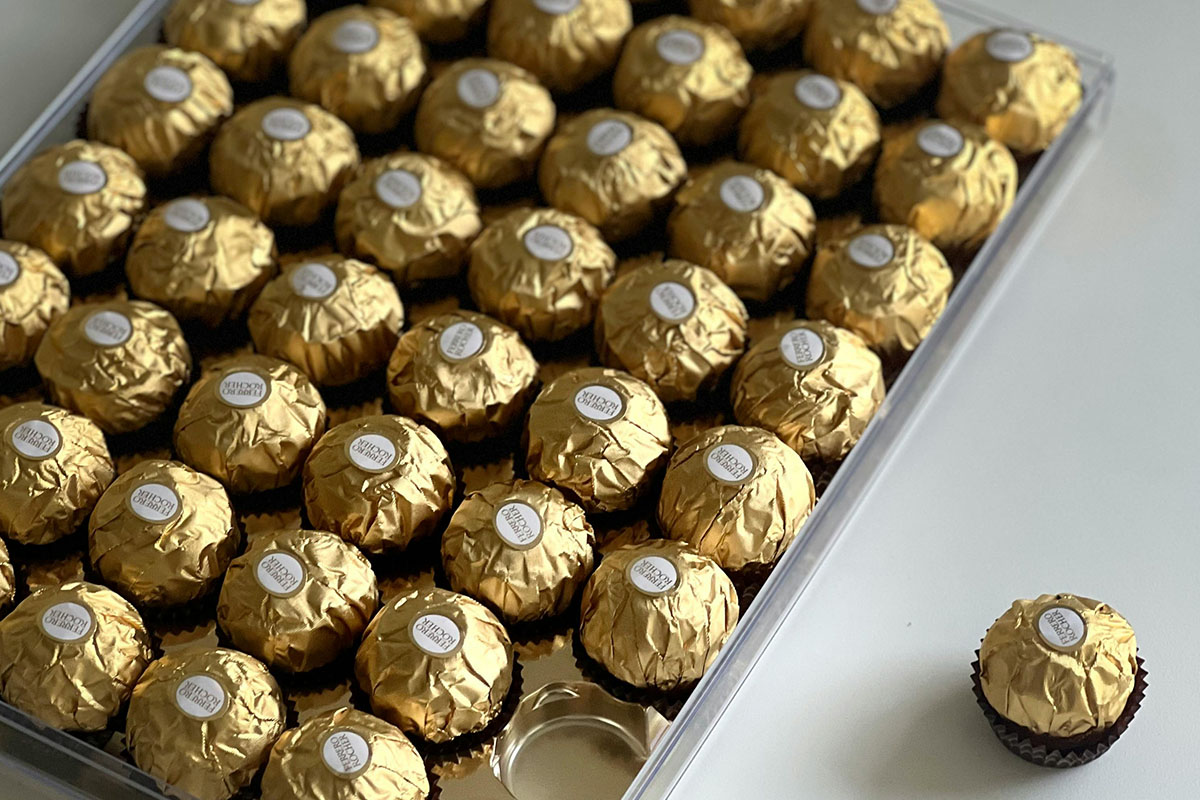
Overall Allergen Policy: Ferrero is known for nut-based products and openly acknowledges that its facilities process multiple tree nuts and peanuts. Consumers with nut allergies should exercise extreme caution across the entire product line.
- Ferrero Rocher: Contains hazelnuts (a tree nut) and is manufactured in facilities that also handle peanuts. Always unsafe for peanut or tree-nut allergies.
- Nutella: Made with hazelnuts and cocoa, no peanuts are listed in the recipe, but it’s produced in facilities that also process peanuts. For anyone with a peanut or tree-nut allergy, it’s considered unsafe.
- Nutella-based products (like B-Ready or Nutella Biscuits): Also contain hazelnuts and are produced in the same facilities as Ferrero Rocher, carrying the same cross-contact risk.
So now you know how the big brands handle allergens, but here’s the twist: even if a full-size bar looks safe, its Halloween or “fun-size” version might not be made in the same place at all. Let’s dig into why those tiny treats can cause big allergy surprises.
The Halloween Problem: Why Miniature & Holiday Candies Are Different
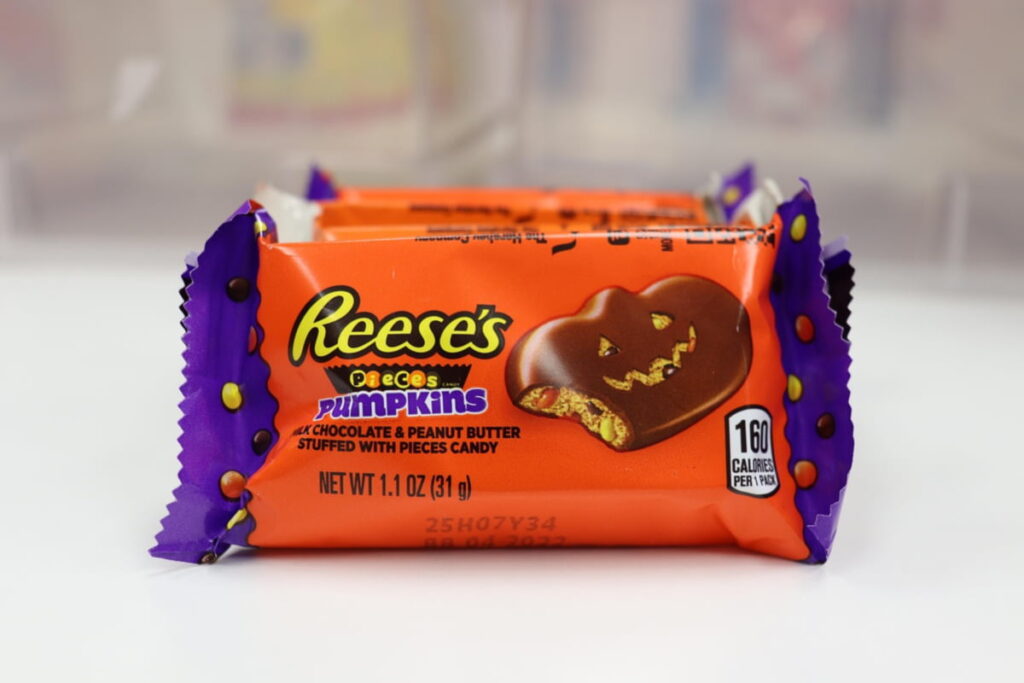
If you’ve ever assumed a fun-size or holiday-shaped candy bar is just a smaller version of the regular one, here’s the scary truth: it’s usually not made in the same place.
During Halloween, Christmas, and other seasonal runs, candy companies ramp up production in different factories, sometimes using shared equipment that isn’t dedicated to peanut-free products. Even brands that are safe the rest of the year can suddenly carry new cross-contact risks.
The “Made in a Different Factory” Rule
- What it means: Mini and seasonal candies are often produced in temporary or secondary facilities to meet high demand.
- Why it matters: Those facilities may handle peanuts or tree nuts, even if the standard-size bars don’t.
- Example: A full-size Hershey’s Milk Chocolate Bar might come from a peanut-free plant, while its Halloween fun-size twin could be made on a shared line that also runs Reese’s.
- What to do: Always check both the outer bag and the individual mini wrapper, they can list different allergen warnings.
The Danger of Variety Bags
- What happens: Mixed bags (like Halloween or party assortments) are often filled on shared equipment where multiple unwrapped candies tumble together.
- Why that’s risky: If even one candy containing peanuts (like Reese’s or Snickers) is unwrapped or leaks oils, it can contaminate everything around it.
- Real-world example: A “chocolate variety mix” that includes both Twix and Snickers means the Twix minis are no longer safe for someone with a peanut allergy.
- Safe move: Stick to single-brand or single-type bags when buying candy for allergy-sensitive households.
Actionable Advice for Seasonal Candy
- Never assume minis are the same as full-size: Always read the label on each size and package type.
- Check for “seasonal edition” markings: Some limited-edition candies use different plants and recipes.
- Avoid mixed assortments: Especially if any peanut-containing candy is included.
- When in doubt, contact the manufacturer: Many brands have seasonal allergen info lines or updated allergen FAQs online.
Beyond Chocolate Bars: Safer Candy Alternatives
If chocolate feels too risky, there are still plenty of candies that are peanut-free and made in nut-free facilities. These are some of the most reliable options for people managing peanut or tree-nut allergies. However, always double-check labels before eating, since ingredients and production lines can change at any time.
- Skittles (Mars Wrigley): Typically made in peanut-free facilities. Always check seasonal or limited-edition packaging.
- Starburst (Mars Wrigley): Peanut-free recipe; U.S. versions are generally safe, but verify the label.
- Sour Patch Kids (Mondelez): Contain no peanuts or tree nuts and are not produced on shared nut equipment.
- Swedish Fish (Mondelez): Peanut-free and a longtime allergy-friendly favorite.
- Dum-Dums (Spangler Candy): Produced in a peanut-free facility and individually wrapped, making them a strong choice for classrooms and events.
- Smarties (U.S. version): Made in a 100% peanut-free facility; widely considered one of the safest candies available.
Tip: Avoid chocolate-coated or seasonal mix versions of these candies, as they may introduce cross-contact risks.
Note: Manufacturing practices can vary by country and by batch. Always read the label or check with the company if you’re uncertain.
Your Allergy Action Plan, A Final Checklist
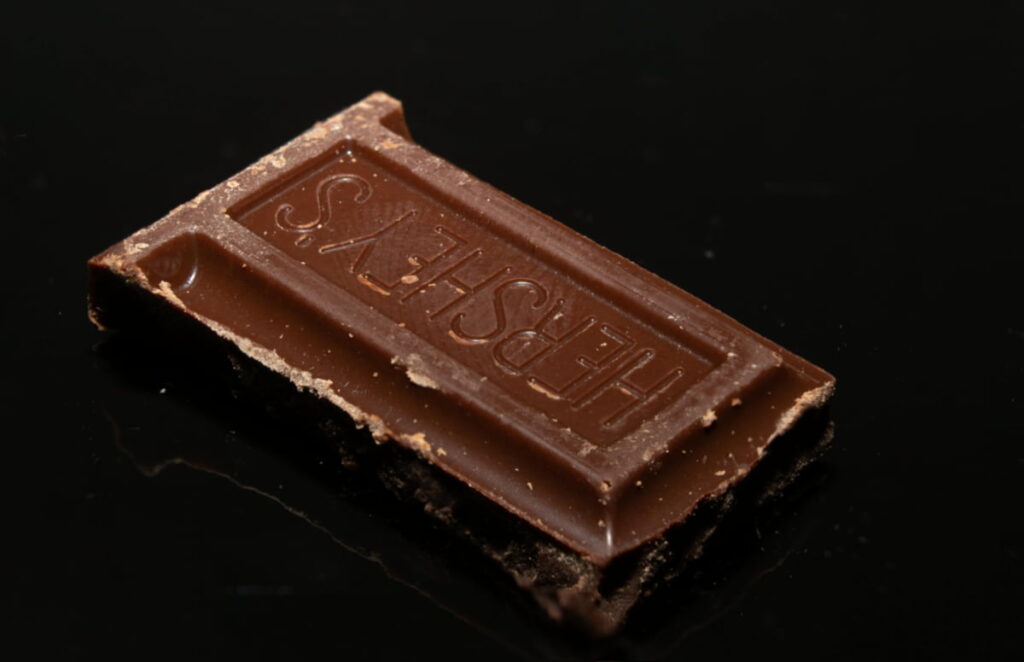
Here’s a simple checklist to help you stay safe and confident when choosing or eating candy.
- Always read the label: Ingredients and facilities can change without notice.
- Understand the “May Contain” warning: It signals possible cross-contact, not guaranteed safety.
- Be cautious with minis and holiday candy: These are often made in different plants than the full-size bars.
- Contact the manufacturer when in doubt: Many companies will confirm allergen details for your region.
- Keep your epinephrine auto-injector accessible: Accidents can happen even with precautions in place.
Remember, this isn’t about fear, it’s about confidence and preparation. Understanding how labels work and how brands differ empowers you to make informed, safe choices every time.
Sources and Verification Log (November 2025)
Transparency is important. The information in this guide was verified with official manufacturer allergen statements and reputable consumer sources as of November 2025.
| Manufacturer | Official Allergen Information | Last Verified |
| Mars Wrigley | mars.com/contact-us | November 2025 |
| The Hershey Company | thehersheycompany.com | November 2025 |
| Nestlé | nestle.com/ask-nestle | November 2025 |
| Ferrero | ferrero.com/contact-us | November 2025 |
| Mondelez (Sour Patch, Swedish Fish) | mondelezinternational.com | November 2025 |
| Spangler Candy (Dum-Dums) | spanglercandy.com | November 2025 |
| Smarties Candy Company | smarties.com/faqs | November 2025 |